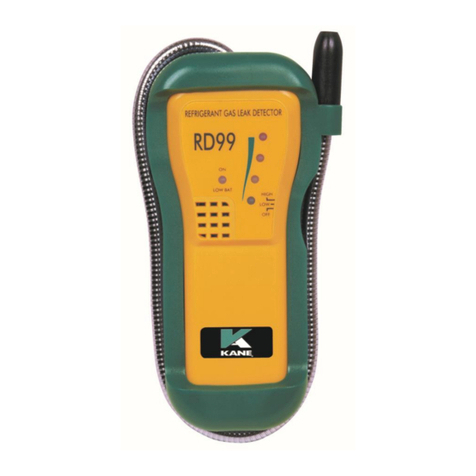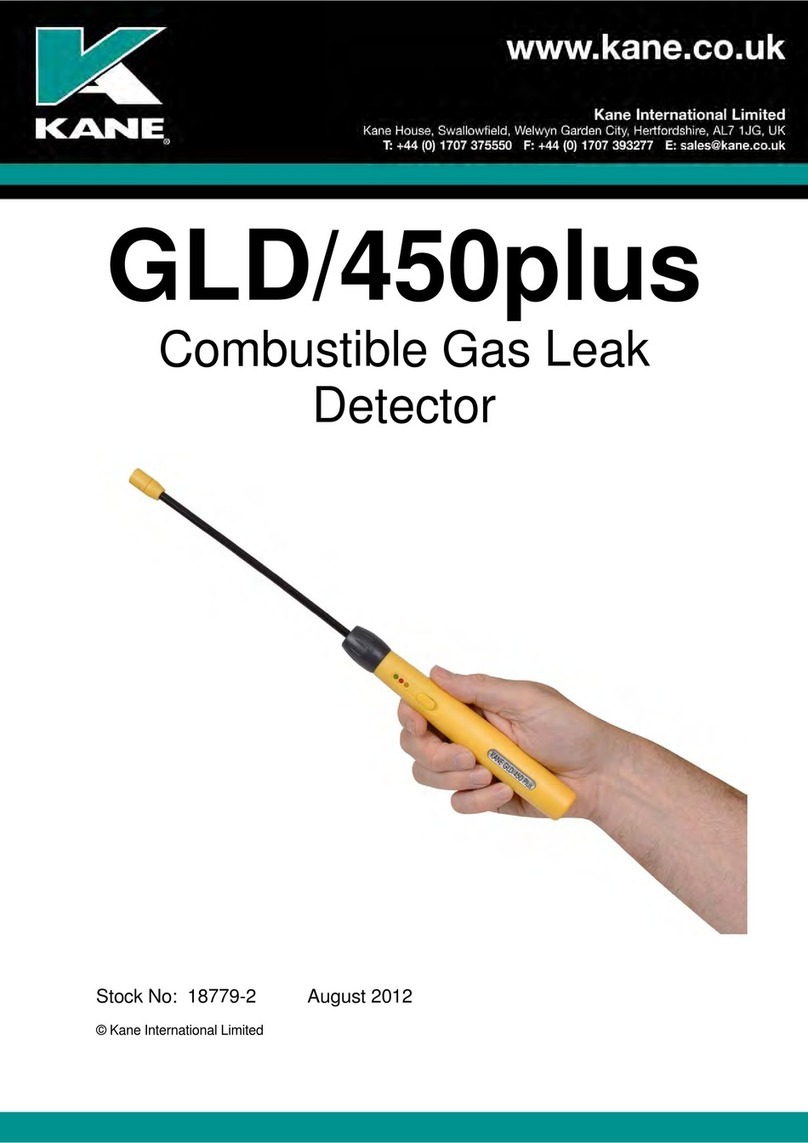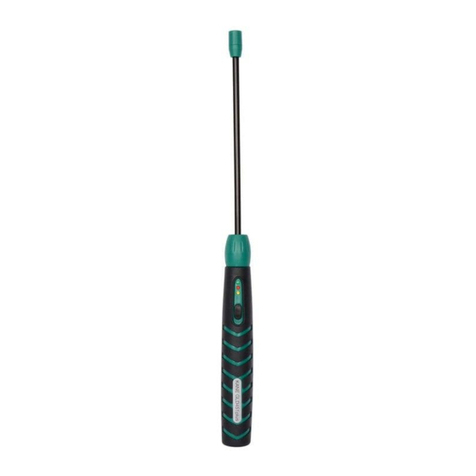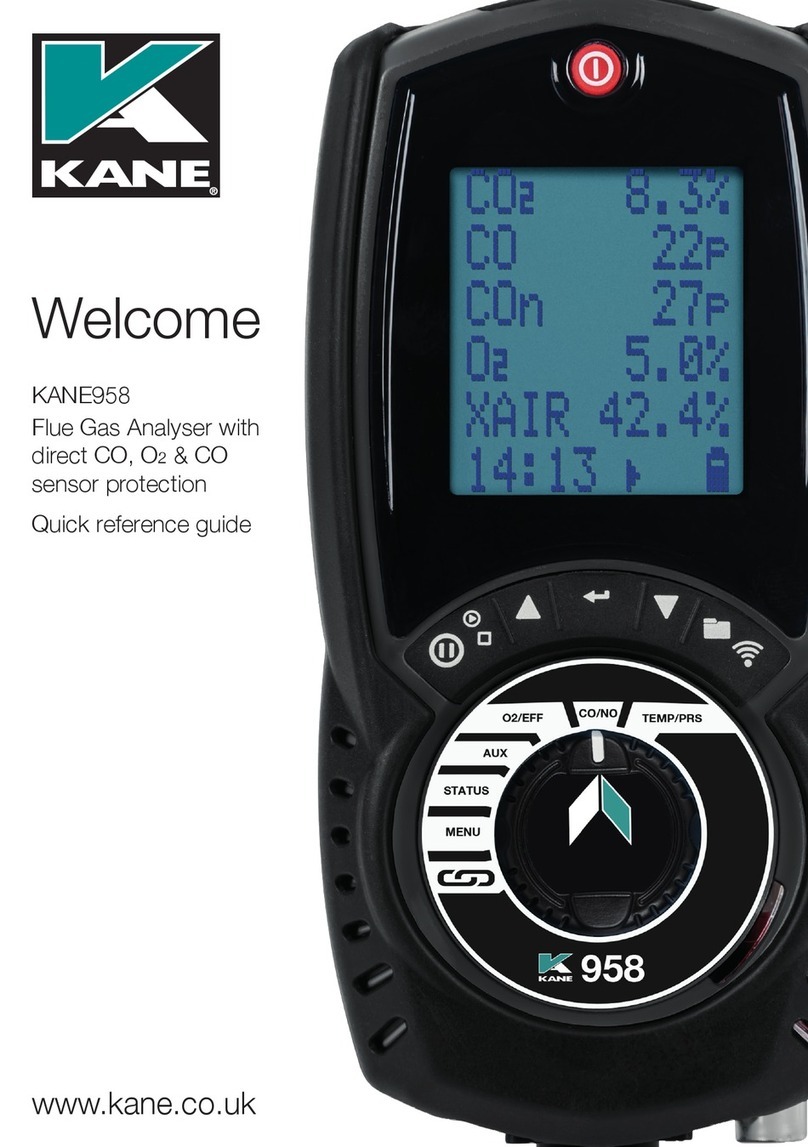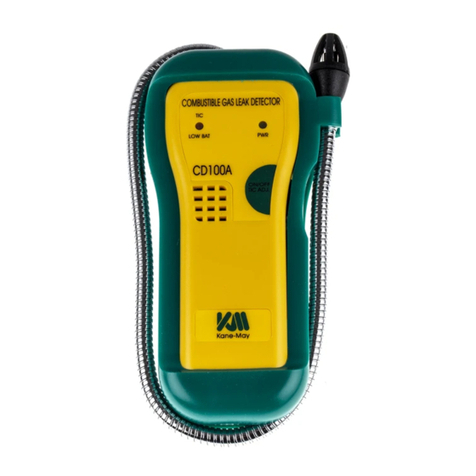
LS1 Page 6
OPERATING INSTRUCTIONS
BASIC OPERATION
1. Turn the instrument on in a non-contaminated atmosphere by moving the
OFF/ON/ALARM slide switch to “ON” or “ALARM”.
2. The green “READY” light will always be on when the batteries have
sufficient power to run the LS1. If the ‘READY’ light flashes then the
batteries need to be replaced.
3. During warm-up it is normal but not required that the ticking sound
increases and all lights on the ‘LEVEL INDICATOR’ are ON. The
“ALARM” light may also flash for a short time.
4. The ticking rate will slowly decrease and lights on the ‘LEVEL
INDICATOR’ will go off. The time required for this could take up to several
minutes depending on the duration of time since the instrument was last
used. (Normally approximately 15 seconds).
5. Turn the “LEVEL ADJUST” until ONLY the first green light on the
‘LEVEL INDICATOR’ is ON, this will also give a slow uniform ticking
sound.
FINDING A LEAK
6. Move the sensor head along area to be checked. Lights on the ‘LEVEL
INDICATOR’ will illuminate and the tick rate will increase as a higher
concentration of gas is detected. The lights will change from green to yellow
and ultimately red.
7. If the last red light is illuminated turn the ‘LEVEL ADJUST’ so that the
lights start to go out. This resets the LS1 for the higher concentration and
allows stronger leaks to be detected.
8. Again move the sensor head until stronger concentrations of gas are found.
Reset for higher concentrations as required.
9. If the first green light on the ‘LEVEL INDICATOR’ goes out and the tick
rate reduces then you are moving away from the leak source.





